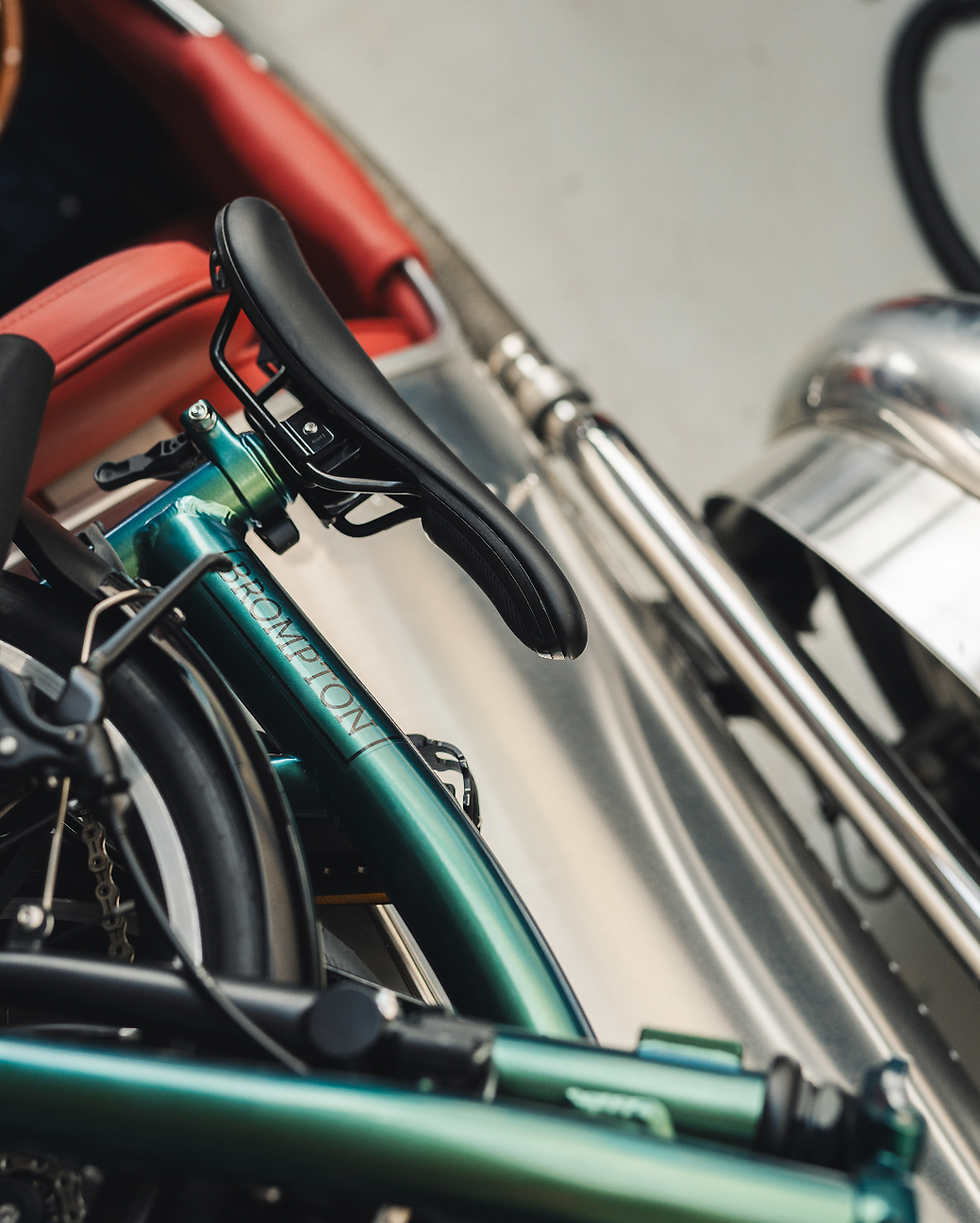Getting Road Trip Ready with Pembleton
- Pembleton Motor Company

- Aug 20, 2024
- 4 min read
Updated: Apr 23
If you're anything like us, the thought of setting off behind the wheel of your favourite vehicle to hit the open road is a siren call of freedom. An escape from the daily grind, following a long black ribbon of tarmac meandering through landscapes your imagination conjures; no deadlines, no worries, no end goal. Just you, your car, and a boundless sense of adventure.

Though this might sound idealistic, it doesn't have to be far from reality. The inception of Pembleton came from the idea of road-tripping a 3-wheeler around Ireland. Since then, many Pembleton owners have completed expeditions of their own all over the world. So, we thought we'd share our experience on how to plan for the perfect road trip...
1. Choose Your Vehicle
In our opinion, there’s no better way to experience a new place than in an open-top sports car. When you're exposed to the elements, your car does more than transport you; it immerses you in the landscape. Beyond seeing the world flash by, your other senses are engaged too; the clang of a cowbell in the Swiss Alps, the crashing waves along coastal roads in the Algarve, the echo of an exhaust in a long tunnel, the aroma of fresh stone-baked pizza in Naples, or the scent of lavender fields in Provence, anyway I'm getting distracted.

Your car needs to be economical; not only good on fuel but with a large range too. You don't want to get caught short between filling stations, too busy soaking up the scenery and having to thumb a lift for petrol.
But jokes aside, above all else, your car must be fun. If your vehicle doesn’t bring you joy, why go on a road trip at all? Enjoy every element of the journey. As the old adage goes, "it's not the destination, it's the journey," and this couldn't be truer for a road trip.
It would be remiss of me not to suggest that the perfect vehicle for your next road trip is a Pembleton T24 roadster or Pembleton V-Sport 3-wheeler. Not only do they fit the bill for all of the above, but they also put a smile on your face and the faces of everyone you meet. Normally seen before heard, you'll find locals turning to identify the raucous V-Twin approaching before cheering and waving with delight. They’re a real conversation starter; if a journey is about anything, it's the connections and the people you meet along the way.
2. Decide on Your Destination and Duration
This will set the framework for your entire trip: choose a final destination or a series of must-see places, but don't be dictated to. Whether it's twisty alpine passes or sweeping coastal roads, keep in mind how you want to reach your destination. We can personally recommend B500 through the Black Forest in Germany, the North Coast 500 that tracks along the northern coastline of Scotland or the Transfăgărășan, the mountain pass to end all mountain passes tucked away in rural Romania. Determine the length of your trip: this will help you plan daily distances and rest stops, and how much you can fit in!
3. Research and List Must-See Attractions

Make a list of attractions, roads, landmarks, and experiences you don't want to miss.
Local Gems: Include popular tourist spots and hidden treasures.
Events and Festivals: Check for any local events or festivals happening during your trip.
4. Map Your Route
Use online tools, books, maps, and apps to plot your route.
Google Maps: A great tool for mapping out your journey and estimating travel times.
Travel Books: You're likely not the first to do your trip; lean into others' experiences to gain route insights that mapping websites might miss.

5. Plan Your Stops
Break down your journey into manageable segments.
Driving Time: Aim for 4-6 hours of driving per day to avoid burnout.
Rest Stops: Plan for regular breaks to stretch, eat, take in the scenery and refuel.
Overnight Stays: Research and book accommodations in advance.
6. Pack Smart

Bring everything you need without overpacking. A Pembleton T24 boats over 200L of storage for such a trip... If you're planning a longer trip, an additional luggage rack/storage may come in handy.
Clothing: Pack versatile clothing suited for various weather conditions.
Snacks and Drinks: Stock up on healthy snacks and plenty of water.
Navigation Tools: Bring a GPS device, maps, and a car charger for your phone.
First aid kit
Spare wheel
Sunglasses/eye protection
Suitable driving shoes
Day bag/rucksack
Sunscreen
Driving license
Local driving documents
Cash
Camera

7. Stay Flexible
Leave room for spontaneity.
Alternate Routes: Have backup routes in case of road closures or traffic.
Extra Time: Allow for unexpected stops and detours.
8. Safety First
Keep safety a priority throughout your trip.
Driving Laws: Familiarise yourself with the driving laws of the regions you'll be traveling through.
Check Weather: Monitor weather conditions and plan accordingly.
Stay Connected: Share your itinerary with a friend or family member and check in regularly.
9. Document Your Journey
Capture the memories and share your experiences.
Photos and Videos: Take plenty of pictures and videos to document your trip. Who knows, you may feature in the next of our 'Behind the Wheel' series
Journaling: Keep a travel journal to record your thoughts and experiences.
Planning a road trip route might seem daunting at first, but with a bit of preparation and flexibility, it can be an incredibly rewarding experience. So, buckle up, hit the road, and embrace the adventure!






















Comments